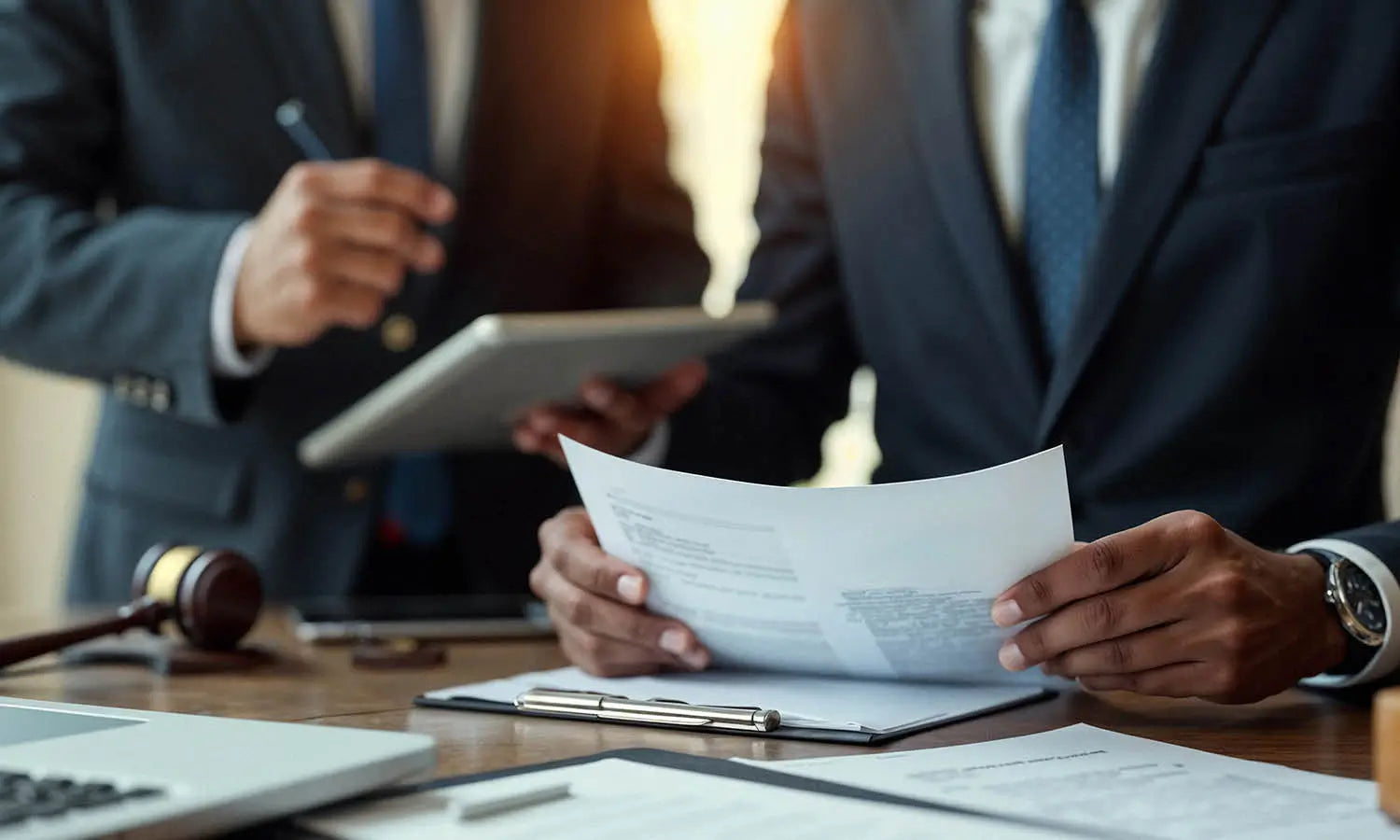Best Actions If Someone Copied Your Logo Design

In the realm of branding, a logo serves as the cornerstone, encapsulating the essence of a business and distinguishing it from its competitors. However, the unique and impactful nature of a logo design can sometimes lead to instances where your creative work is replicated without permission. Such scenarios not only pose a threat to your intellectual property but can also dilute your brand's identity in the market.
Addressing logo design infringement effectively is crucial for maintaining the integrity and value of your brand. Whether you're a freelancer, a small business owner, or part of a larger corporation, understanding the best actions to take when your logo design is copied is essential. This guide aims to equip you with practical steps to assert your rights, navigate the complexities of intellectual property laws, and safeguard your logo against potential infringements.
By staying informed and proactive, you can protect your creative investment and continue to thrive in a competitive business landscape.
Identify the Similarities
When confronting a situation where your logo design might have been copied, the first step is to meticulously identify the similarities between your original design and the alleged copy. This involves a detailed comparison of both logos to pinpoint exact elements that have been replicated. Focus on specific aspects such as color schemes, typography, graphic elements, and overall style. For instance, if your logo design features a unique symbol or a particular set of colors arranged in a distinctive pattern, highlight these elements in your comparison.
Analyzing the composition and layout also plays a crucial role. Look at how the elements are aligned, their proportions, and the use of space. Sometimes, the similarity in the conceptual framework or the thematic expression of the logo can also suggest copying, even if the designs are not identical in appearance.
This step is vital because it establishes the groundwork for any legal claim you might pursue. The more precise you are in identifying and articulating these similarities, the stronger your case can be. Remember, in the field of logo design, even subtle imitations can impact brand identity and market presence, making it essential to address these issues comprehensively.
Document the Evidence
Once you have identified the similarities in the logo designs, the next critical step is to document the evidence thoroughly. Start by securing copies of your original logo design files, including all drafts and iterations. This documentation should also include timestamps that can establish when each version of your logo was created and modified. If possible, include metadata from graphic design software which can serve as proof of the creation dates and changes over time.
Gather all instances of your logo’s public use, such as on your business website, marketing materials, and social media accounts. This not only establishes your logo’s presence in the market but also demonstrates its use over time, which is crucial for proving ownership and originality in legal contexts.
Additionally, collect and organize any copyright and trademark registrations that pertain to your logo. These documents are fundamental in legal proceedings as they provide a government-backed date of registration, serving as a benchmark for establishing when your logo officially entered the public domain.
Check the Intellectual Property Rights
Understanding the intellectual property rights associated with your logo design is a crucial step in determining how to proceed if someone has copied your work. Firstly, review whether your logo is officially trademarked. A trademark can provide legal protection that prevents others from using a similar mark in a way that could cause confusion among consumers. If your logo is not trademarked, consider the copyright laws that might apply. Copyright automatically protects artistic works from the moment of their creation, provided they are original and fixed in a tangible medium.
Research the scope of your protection, particularly if you operate across different jurisdictions. Intellectual property laws can vary significantly from country to country, influencing how you might enforce your rights internationally. If your logo is registered, confirm the details of the registration, such as the geographic area it covers and the exact elements it protects, since logos can be composed of multiple protectable parts.
It's also beneficial to check the status of any pending trademarks or copyrights related to your logo. Knowing the full extent of your legal protections helps in strategizing the best approach to take against infringement. For those unfamiliar with these processes, resources are available from intellectual property offices or online databases that provide detailed information about existing trademarks and copyrights.

Contact a Legal Advisor
When dealing with a potential infringement of your logo design, consulting with a legal advisor who specializes in intellectual property law is advisable. A legal expert can provide a detailed analysis of your situation, offering insights that are critical in developing a strong case against the infringing party.
Prepare for your consultation by gathering all relevant documents, including your logo’s design history, any registration certificates, and evidence of the alleged infringement. An attorney will use this information to assess the validity of your claim and the likelihood of a successful legal outcome.
A legal advisor can also guide you on the nuances of intellectual property law pertinent to your case, such as the likelihood of confusion standard in trademark law or the originality criterion in copyright law. They can advise you on the best course of action, whether it's sending a cease and desist letter, negotiating a settlement, or pursuing litigation.
Furthermore, a lawyer can help you understand the potential costs and benefits of legal action. They can strategize on how to enforce your rights in a way that is both cost-effective and aligned with your business goals. This professional guidance is indispensable, ensuring that your actions are legally sound and tailored to protect your logo design effectively.
Reach Out to the Offender Informally
Before taking formal legal action, it can be beneficial to address the issue of a copied logo design through informal communication. This initial contact can be made via a direct email or a letter, outlining your concerns and clearly stating the observed similarities between your original logo and the one in question. Make sure to approach the situation professionally and courteously, avoiding any language that could escalate tensions.
In your communication, provide a brief explanation of why you believe there has been an infringement and how it affects your business. You might also include visual comparisons that highlight the similarities. This can help the recipient understand your perspective and assess the situation from your viewpoint.
Offer a solution or a request, such as ceasing the use of the disputed logo or discussing possible changes that could differentiate the logos sufficiently. It’s often in both parties' interest to resolve such matters without resorting to costly legal proceedings.
Ensure that you document all interactions, as this correspondence can be useful if the situation escalates to legal action. An informal approach not only demonstrates your willingness to resolve matters amicably but also establishes a foundation for any necessary follow-up actions if the initial contact does not yield a satisfactory response.
Send a Cease and Desist Letter
If informal attempts to resolve a logo design infringement are unsuccessful, the next step may involve sending a cease and desist letter. This formal document serves as a strong but civil warning to the infringing party, detailing the nature of the infringement and your legal rights concerning the copyrighted or trademarked logo design.
The letter should be clear and concise, outlining the specific elements of the logo that are protected, the evidence of the infringement, and a demand for immediate cessation of the logo’s unauthorized use. It is advisable to specify what actions are required from the recipient, such as removing the logo from all materials or discontinuing its use entirely.
Include a deadline for compliance and mention that failure to adhere to the demands could result in legal action. While the tone should remain professional, the language must convey the seriousness of the infringement and your intent to pursue further legal remedies if necessary.
It is often recommended to have this letter drafted or reviewed by your legal advisor to ensure it contains all necessary legal assertions and is free from language that could weaken your position. A well-crafted cease and desist letter not only communicates the seriousness of your claims but can also help expedite a resolution, potentially avoiding the need for litigation.
Claim Your Rights on Social Media Platforms
When your logo design is copied, it's essential to claim your rights on social media platforms where the infringement might be taking place. Many social media sites have mechanisms to address copyright and trademark infringement, ensuring that creators can protect their intellectual property. Begin by identifying where the copied logo is being used on platforms like Facebook, Instagram, Twitter, and LinkedIn.
Each platform typically has a straightforward process for reporting intellectual property violations. You will need to provide proof of your original logo design, including any trademark registrations, and specify the nature of the infringement in your report. It's important to be detailed in your explanation to help the platform's review team understand the issue clearly.
When filing your claim, include links to the original work and where the infringement is occurring. Social media platforms usually respond to such claims by reviewing the reported content and may remove it if they find it violates their policies on intellectual property rights.
Taking action on social media not only helps in controlling the misuse of your logo but also reinforces your presence and rights as the original creator. This proactive stance can deter further infringement and maintain the integrity of your brand identity across digital platforms.

Monitor the Market
Continuous monitoring of the market is vital to protecting your logo design and ensuring that no new infringements occur. Set up alerts using tools like Google Alerts with your brand name and related keywords to receive notifications of any new uses of similar logos online. This can provide early warning signs of potential infringements and allow you to act quickly.
Consider utilizing specialized intellectual property monitoring services that can scan the internet, including e-commerce platforms and company websites, for logo misuse. These services often use advanced image recognition technology to find visual similarities that might not be caught through keyword monitoring alone.
Regularly check competitor activities and industry updates. Attending industry events, subscribing to trade publications, and participating in relevant forums can help you stay informed about new market entrants whose logos might closely resemble yours.
It’s also beneficial to engage with your customer base and encourage them to report any copies they encounter. Often, loyal customers are the first to notice and can be valuable allies in protecting your brand. By remaining vigilant and using the right tools, you can effectively monitor the market and take immediate action against any unauthorized use of your logo design, preserving your brand’s uniqueness and value.
Seek Mediation or Arbitration
When confronting issues related to copied logo designs, seeking mediation or arbitration can be a highly effective and less confrontational alternative to litigation. These methods involve neutral third parties who help facilitate a resolution between the disputing parties without the need for a court trial.
Mediation is a voluntary process where a mediator assists both sides in negotiating a mutually acceptable settlement. It is less formal and offers a flexible approach, allowing both parties to openly discuss their views and reach a consensus. The mediator does not decide the case but helps guide the discussion to foster understanding and agreement.
Arbitration, on the other hand, involves an arbitrator who listens to both parties' arguments and makes a decision that is usually binding. This process is more structured than mediation but still less formal than court proceedings, and it can be faster and less costly than traditional litigation.
Both approaches are confidential, which can help preserve business relationships and keep the details of the logo design dispute private. If you choose to go this route, ensure that the mediator or arbitrator has experience with intellectual property issues, particularly those involving logo design.
These alternative dispute resolution methods not only save time and resources but also provide a less adversarial way to resolve conflicts, keeping your focus on running your business rather than being bogged down in prolonged legal battles.
Protect Your Design Going Forward
To safeguard your logo design effectively against future infringements, proactive measures are essential. Start by registering your logo as a trademark if you haven't already done so. Trademark registration provides legal protection, making it easier to enforce your rights against potential infringers. Ensure your trademark is registered in all relevant jurisdictions where your business operates, as trademark protection is typically territorial.
In addition to legal protections, consider using digital watermarks or embedding metadata into your digital logo files. These can include copyright information, the date of creation, and ownership details, which can be crucial in proving ownership in case of disputes.
Educating your staff and partners about the importance of intellectual property rights and the legal implications of copyright and trademark infringement is also vital. This awareness can prevent unintentional misuse of your logo and strengthen your company’s overall approach to intellectual property.
Regularly monitor the use of your logo online and in the marketplace. Employ tools and services that scan for visual similarities and unauthorized uses of your logo. Quick detection allows for immediate action, preventing potential damage to your brand’s reputation.
Finally, keep detailed records of your logo’s design process, revisions, and applications. Documentation is your first line of defense in protecting your creative assets and can provide indisputable evidence in legal situations.
Conclusion
Protecting your logo design is crucial in maintaining the unique identity and integrity of your brand. By understanding and utilizing intellectual property rights, seeking legal counsel, and using formal and informal resolution methods, you can effectively defend against infringements. Remember, the value of a logo extends beyond its visual appearance; it symbolizes your brand's reputation and market position. Proactive protection strategies, combined with vigilant monitoring and swift action against unauthorized uses, ensure that your logo continues to serve as a powerful asset for your business in the competitive landscape of logo design.
Let Us Know What You Think!
Every information you read here are written and curated by Kreafolk's team, carefully pieced together with our creative community in mind. Did you enjoy our contents? Leave a comment below and share your thoughts. Cheers to more creative articles and inspirations!
















Leave a Comment